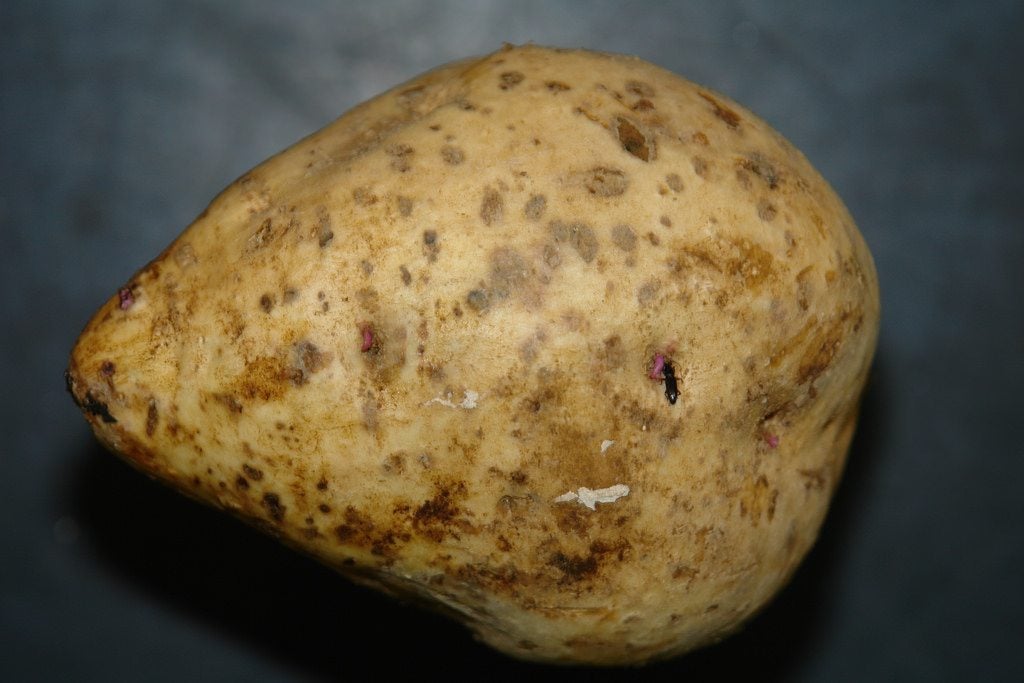Sweet Potato Scurf Information: Treating Sweet Potatoes With Scurf


Sweet potatoes provide us with a variety of nutritional benefits, such as vitamins A, C, and B6 as well as manganese, fiber, and potassium. Nutritionists and dieticians boast sweet potatoes’ ability to help us lose weight, boost immunity, control diabetes, and help ease the discomfort of arthritis. With all these health benefits, growing sweet potatoes in the home garden has become popular. However, like any plants, growing sweet potatoes can have its own challenges. Scurf on sweet potato plants is perhaps the most common of these challenges. Read on for sweet potato scurf information.
Sweet Potatoes with Scurf
Sweet potato scurf is a fungal disease caused by the fungus Monilochaeles infuscans. It grows and produces spores on the sweet potato skin. This scurf only affects sweet potatoes and their close relative the morning glory, but does not affect other crops. For instance, silver scurf, caused by Helminthosporium solani, only affects potatoes. This fungal disease is also only skin deep and does not affect the edibility of sweet potatoes. However, sweet potatoes with scurf have unsightly purple, brown, gray to black lesions, which causes consumers to shy away from these sick-looking sweet potatoes. Sweet potato scurf has also been called soil stain. High humidity and heavy periods of rain contribute to the growth of this fungal disease. Scurf is usually spread by sweet potatoes coming into contact with other affected sweet potatoes, contaminated soil, or contaminated storage crates and the like. Scurf can remain in the soil for two to three years, especially in soils rich with organic material. Its spores can even become airborne when infected plants are harvested or contaminated soils are tilled. Once infection occurs, there is no sweet potato scurf treatment.
How to Control Scurf on a Sweet Potato Plant
Prevention and proper sanitation are the best ways to control scurf on sweet potatoes. Sweet potatoes should only be planted in scurf free locations. Crop rotation is recommended to ensure that sweet potatoes are not planted in the same area within a three to four year period. Crates, baskets, and other storage places of sweet potatoes should be sanitized before and after holding sweet potatoes. Gardening tools should also be properly sanitized between uses. Buying certified sweet potato seed can help reduce the spread of scurf on sweet potatoes as well. Whether certified seed or not, sweet potatoes should be thoroughly inspected for scurf before planting them. Wetting down sweet potato roots helps the fungal disease to be more visible for thorough inspection. Many gardeners choose to just dip all sweet potato roots in a solution of fungicide for one to two minutes before planting as a preventive. Be sure to read all fungicide labels and follow their instructions.
Sign up for the Gardening Know How newsletter today and receive a free copy of our e-book "How to Grow Delicious Tomatoes".

Darcy is a former contributor to Gardening Know How. She is a professional landscape designer and gardening writer with experience in plant sales. An avid gardener, Darcy has a passion for sharing practical tips to help others grow.